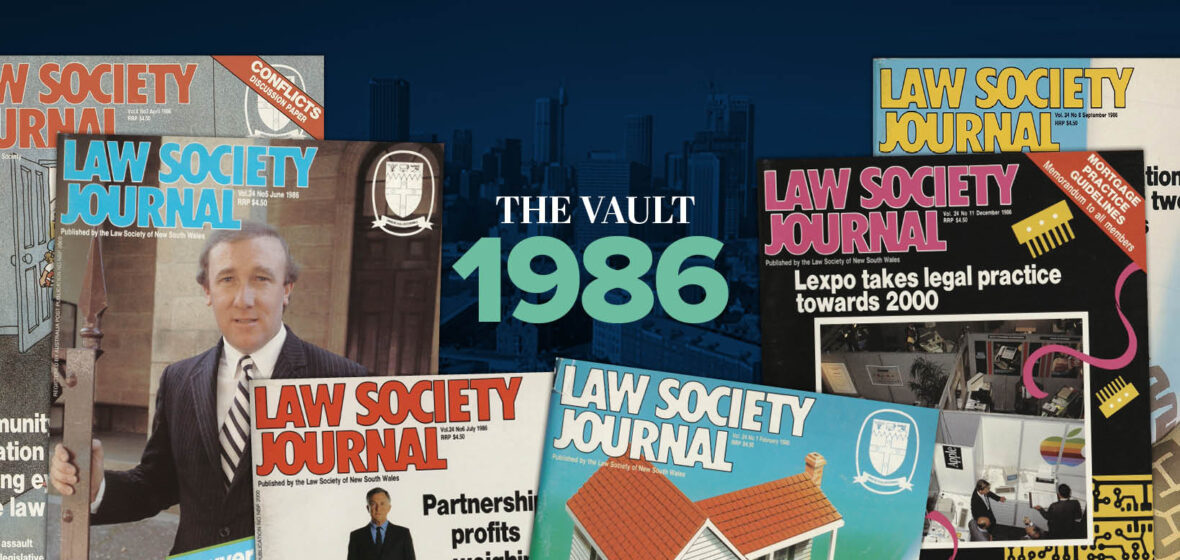“If the government fixes land agent fees at less, then either the Board has been wrong, or agents will be forced to work for less than a fair reward”
The year is 1986 – designated as the International Year of Peace by the United Nations and one of mixed emotions at home and abroad. Prime Minister Bob Hawke and Treasurer Paul Keating lead Australia. Kim Garling is the President of the Law Society, and Neville Wran is the Premier of New South Wales, but resigns in July to be replaced by Barrie Unsworth.
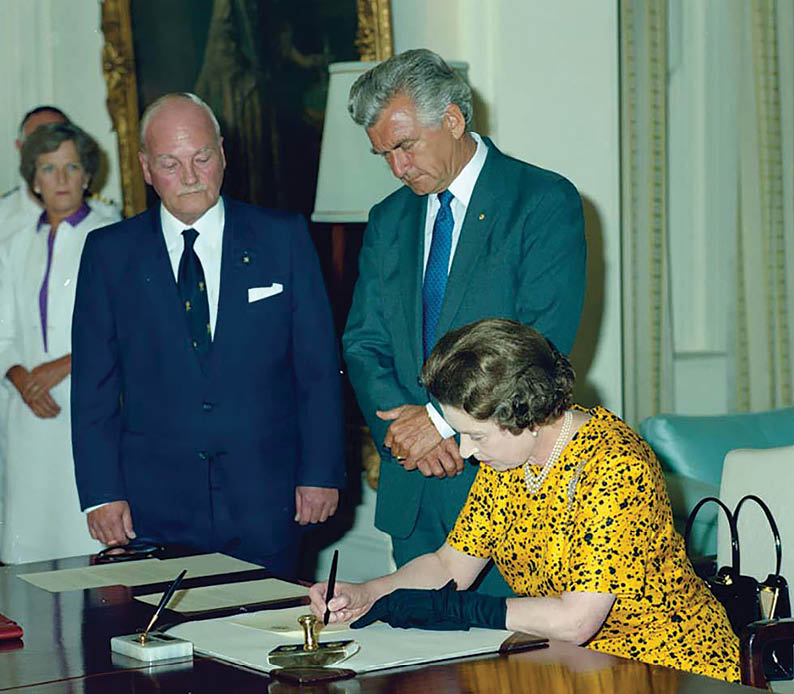
With the passing of former NSW Senator and Attorney General Lionel Keith Murphy QC at age 64, it is a year of mourning and change for the legal profession. The Conveyancing Act is enacted to ensure the transfer of property in NSW is fair and legal and protects the rights of buyers and sellers. Australia takes its final step in becoming a sovereign and independent nation with the Australia Act (Cth) coming into effect, ending the UK parliament’s power to legislate in Australia. The enactment of the Affirmative Action Act brings the equal employment opportunity for women to the fore, and the Australian Human Rights Commission is established to investigate discrimination and human rights complaints. Overseas, tragedy strikes twice. In January, seven crew members are killed after the space shuttle Challenger explodes 73 seconds after launch, and in April the Chernobyl disaster claims the lives of 30 people. The world is introduced to the Oprah Winfrey show, the musical The Phantom of the Opera debuts in London’s West End, Top Gun and Crocodile Dundee premiere, and Neighbours debuts on Channel Ten.
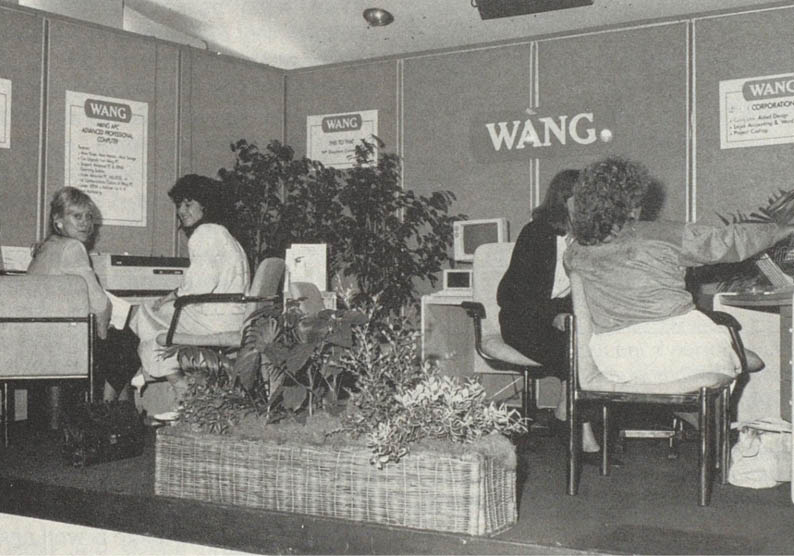
Symposium provides a glimpse into the future of legal practice
In December 1986 legal practice and technology in 1990–2000 is the focus of the LEXPO exhibition and symposium. Trevor Haines, Secretary of the Attorney General’s Department, delivers the keynote address. He outlines how advances in technology are affecting community expectations of the legal profession.
Haines also remarks the Attorney General’s Department has begun to computerise all court registries; computer assisted transcript facilities are being looked at; and computerising all land titles for NSW is well advanced. Haines believes “that technological changes would bring about the demise of conveyancing, rather than the advent of non-legally qualified conveyancers.”
Peter Moore, lawyer, and archivist, delivers an address where he notes: “Computers will be capable of being instructed by touch on the screen, by voice recognition and by simultaneous sight selection, making access to the computer simpler than it is now.” It is also predicted that by 1990 voice recognition will become virtually an essential system, allowing “the creation of new text and editing of old text without a keyboard.” Other speakers note adapting to technology like email, and scanning and to new software is necessary, and by 1990 solicitors will be redundant if they cannot use computers.
A prize is given to celebrate the inaugural office efficiency exhibition: a Remington computer with 640 KB of memory, a 20 MB hard disk, and word processing — valued at $14,500.
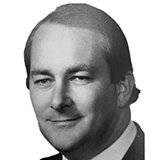 1986 Law Society President Kim Garling
1986 Law Society President Kim Garling
The legal profession vs NSW Government
In his President’s message in June 1986, President Kim Garling addresses the negative impact on the profession due to the lack of consultation on state government proposals throughout the year.
“The Wran government has threatened the economic viability of solicitors with its proposals for change in accident compensation, workers compensation and conveyancing,” Garling says.
He vows the Law Society of NSW will not allow changes to occur without strong opposition at all levels, unless those changes are of benefit to the community.
Garling objects to the Minister for Natural Resources’ introduction of land agents in NSW as a cheaper conveyancing alternative to solicitors. Drawing on the example set by land agents in South Australia and Western Australia, Garling states the quality of work performed in these states would not be acceptable in NSW and their work has been shown not to be cheaper than solicitors’.
He says solicitors’ fees are set by the government-appointed Legal Costs & Fees Board which was established to allow a fair reward for work done.
“If the government fixes land agent fees at less, then either the Board has been wrong, or agents will be forced to work for less than a fair reward,” Garling says.
He warns that this, combined with the cost of insurance, regulation and a fidelity fund, will lead to a much lower quality of work.
Garling says that if both conveyancing and accident compensation proposals succeed, many practices, especially suburban and regional practices, may no longer be viable and will force solicitors to either leave the profession or relocate to the city.
“The effect on the courts system, Legal Aid work, the arbitration system and other areas of legal work could be most destructive,” he writes.

‘It is all too human to want to emulate Sherlock Holmes, but such an approach leads to error [and] unconscious bias and the reversal of onus becomes inevitable’
In August 1986 the Journal publishes a critical essay by Stuart Tipple, solicitor for Lindy and Michael Chamberlain, about the shortfalls of forensic science. In it, Tipple expresses doubts about the way forensic evidence is comprehended by juries. Drawing from his own experiences during the Chamberlain case and that of the Shannon Royal Commission in South Australia into the flawed murder conviction of Edward Splatt, he calls for reforms in the preparation, presentation, and evaluation of scientific evidence in our legal system.
“In an age where this evidence is poised to be used more and more, its potential danger unless there is immediate reform is yet to be realised,” Tipple says.
He criticises the lack of record keeping and the absence of independent checks for major observations in NSW laboratories. He recalls that during the Chamberlain trial the forensic biologist who conducted the blood tests from samples taken from the Chamberlain car admitted her work notes, which did not include the results, were the basis of her sworn evidence.
“If the biologist had not been able to augment her work notes with oral evidence of her recollections of controls used in the tests and results that were not recorded, the greater part of the blood test evidence would have been inadmissible,” Tipple argues.
Tipple points out the lack of preservation of forensic material, leaving the accused without the option to have it independently tested or re-tested with new techniques as they become available.
He states the need for adequate controls in testing, the use of clear language that is free from unambiguous interpretation, and for forensic scientists to refrain from crossing the boundaries of their expertise that may lead to developing an unconscious bias.
“It is all too human to want to emulate Sherlock Holmes, but such an approach leads to error [and] unconscious bias and the reversal of onus becomes inevitable,” Tipple says.
Tipple supports Shannon’s opposition to forming special juries to evaluate conflicting and difficult scientific evidence as this would likely “produce a ‘tunnel vision’ which would be inimical for the proper administration of justice in that particular case.”
He says the changes and reforms he is advocating will make miscarriages of justice easier to identify and assist in regaining the loss of confidence in our legal system.
Both the Splatt and Chamberlain cases led to the establishment of the National Institute of Forensic Science, with the aim to approve the efficiency, capability, and reliability of government forensic laboratories.

Concern over the security of practitioners at court
In February 1986, the Journal receives a letter from a solicitor, E.T. Skuse, expressing concern for the safety of solicitors, barristers and the public in court after a “crazed, disappointed litigant” shot him in the chest by mistake whilst appearing before the Supreme Court of Northern Territory at Alice Springs in May 1975.
Skuse tells of the challenges he has faced since in claiming damages against the Commonwealth for negligence in its handling of the affair – particularly since the Commonwealth Attorney General had received written notice from the assailant of their intentions prior to the incident.
The Supreme Court of Northern Territory ruled the duty of care had not been breached by the Commonwealth and his subsequent appeal to the Federal Court of Australia was unsuccessful.
Skuse warns the Commonwealth has no duty to protect people obliged to appear in courts and raises the potential safety risks to members of the legal profession as well as the public.
He asks for the Law Society’s support in his appeal to the High Court of Australia.
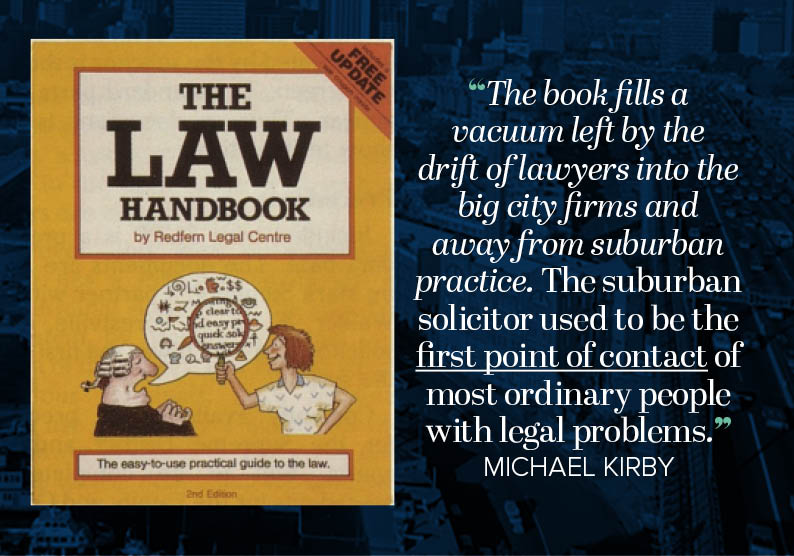
An easy-to-use practical guide to the law
In July, Justice Michael Kirby launches the second edition of the Redfern Legal Centre’s The Law Handbook, three years after the first edition to keep up with the rapid changes in law. Justice Kirby tells the Journal that the decline of the economic viability of sole practitioners has led to their diminishing numbers, which presents problems in getting expert advice to poor and disadvantaged community groups. “The book fills a vacuum left by the drift of lawyers into the big city firms and away from suburban practice.” Kirby says. “The suburban solicitor used to be the first point of contact of most ordinary people with legal problems.” Written by barristers, solicitors and other legal experts, the book is presented in an accessible way with topics of common concern to ordinary citizens. Available post-free from Redfern Legal Centre or from retail booksellers for $29.95.
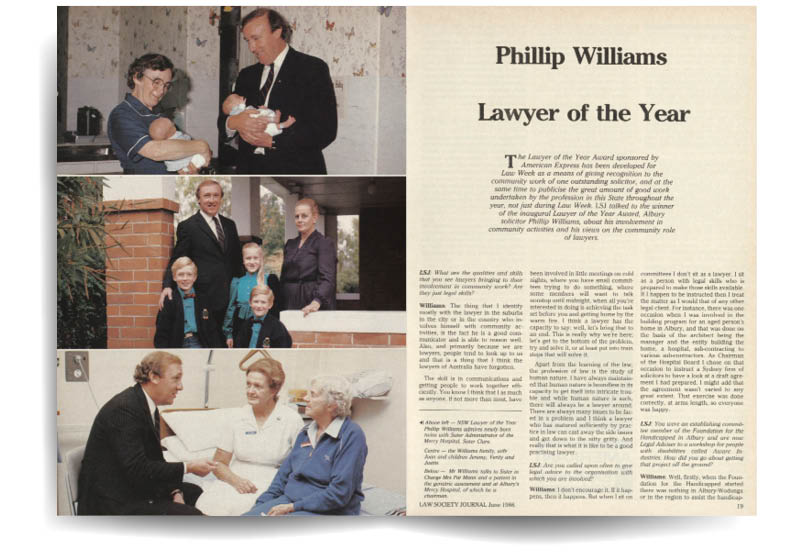
The Hot Topics
- Herron hits back at ‘unscrupulous’ computer dealers: In June, Fred Herron, Immediate Past President of the Law Society of NSW, writes a letter to the Journal after he learns of his name being used without permission by a certain computer dealer to sell their equipment. He notes recent statements used by the computer dealer include “We have a close association with Fred Herron and have supported him in his development of computer systems for solicitors” and “Fred really started off in computers with us because we sold him his first computer.” Herron hits back, calling this dealer “unscrupulous” and the so-called “close association” in their statements false. He clarifies the relationship was nothing more than a “one-time chance encounter” at a computer convention and that this computer dealer would be the last one to receive his endorsement. He urges any solicitor who has encountered this to contact him directly before any commitment is made as it could “save a lot of trouble and heartache.”
- Law in our schools: In April, the Journal reports that legal studies is likely to become a matriculation subject in NSW high schools in the next few years. NSW is the last state in Australia to make the move. At this time, more than half of high-school students are leaving school by the end of year 10. The Legal Eagle newspaper was the origin of legal education in NSW schools. Started in 1975, it aimed to give all students a view of the legal system — including those who left by year 10. Since 1983, legal education has sat as “other approved study” in year 11, “designed and assessed by individual schools.” It does not count towards matriculation. Since this leaves many students out, an advisory panel of lawyers and teachers is set up to consider the feasibility of making it part of year 12. They are unanimously in favour of it. Their draft syllabus aims to help students “narrow the gap between the law and themselves.” It is not aimed at creating “a generation of bush lawyers, nor a preparatory course for budding legal eagles.” Who will teach the course is “more contentious,” with legal qualifications “not necessarily an indication of any ability to teach law to young people.” Funding is uncertain, as is what will be in the course and timings as “beyond [this year or the next] is impossible to predict.”
- Equal employment opportunities for women becomes law: In June, the Affirmative Action Bill 1986 is before the Senate. It foresees reports being delivered to the Commonwealth Government twice a year showing progress against an “Affirmative Action Program” by certain types of employers. These include employers with more than 100 staff — but exclude Commonwealth, state and territory governments. The programs must be designed so that action is taken to eliminate discrimination against women and to introduce measures that promote equal opportunity for women in relation to “employment matters.” These include recruitment, promotions, transfers, training, development, and conditions of service. The reports will be confidential. Introducing the Bill, Prime Minister Bob Hawke says he wants to stress that the Government’s affirmative action legislation did not propose positive discrimination or reverse discrimination. “We are totally opposed to the use of quotas, and this legislation by stating that all actions are to be based on merit makes this clear,” Hawke says.
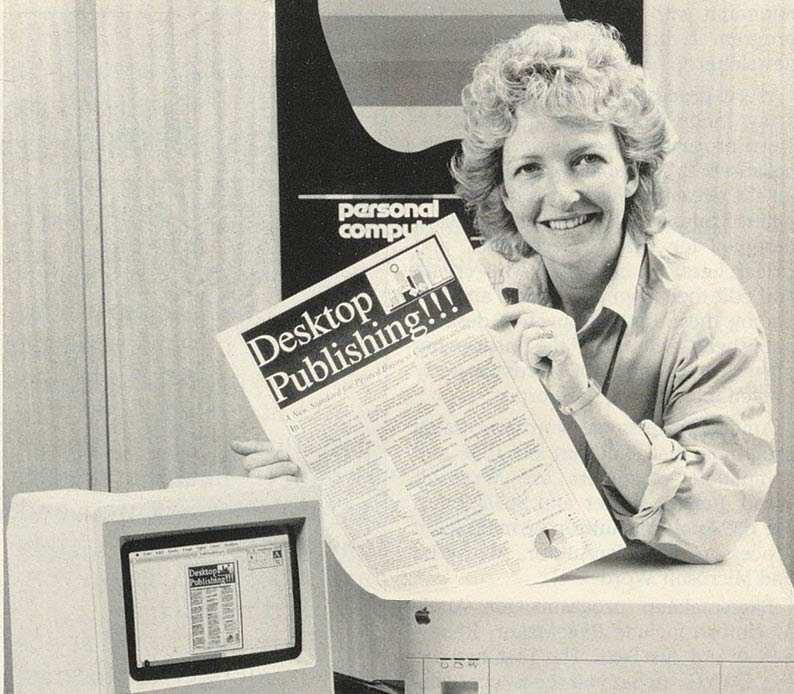
Publishing a newsletter from your desktop
How can you keep your clients and staff informed and let potential clients know what you do? By publishing your own newsletter, of course. You could even do it in-house with some of your existing computer equipment. A guide appears in the October Journal, written by Patrick Macalister, on how small and medium-sized businesses can affordably publish a newsletter to create awareness of their business using a computer and a printer. It details the hardware and software options required, recommended products, and their costs.
The guide introduces desktop publishing as a likely major use for personal computers in the future. It sets a new middle ground between cheap publishing using a typewriter and a photocopier, and the more expensive option, which requires the services of a designer, typesetter and a printer.
“Desktop publishing systems now available claim to give near typeset-quality print on your choice of paper,” Macalister says.
These days, the Journal team has a suite of newsletters available to members, including LSJ News, Legal Updates, Ethics and Standards Quarterly and Debrief. Sign up today via the LawID subscription portal.
Visit the LSJ archives for more
Our online portal provides digital access to every edition of the Law Society Journal produced from 1963 until today. This valuable resource is searchable, printable and shareable – and exclusively available to Law Society members.

